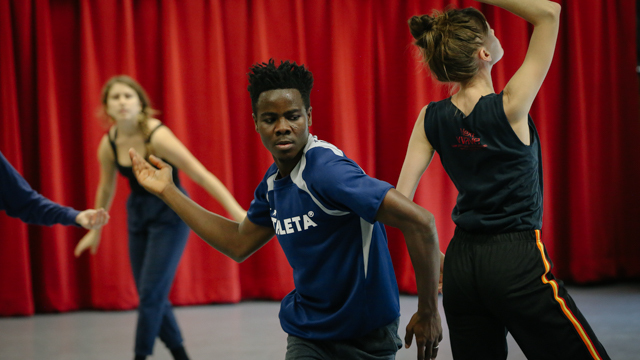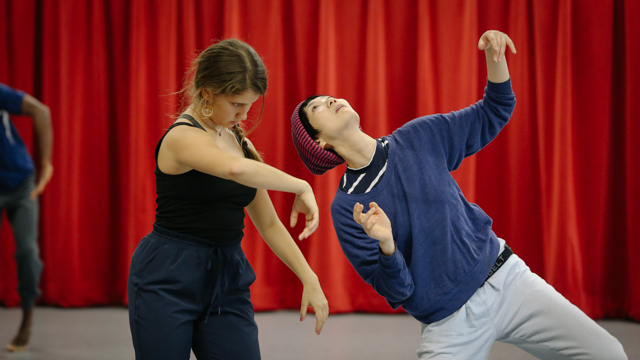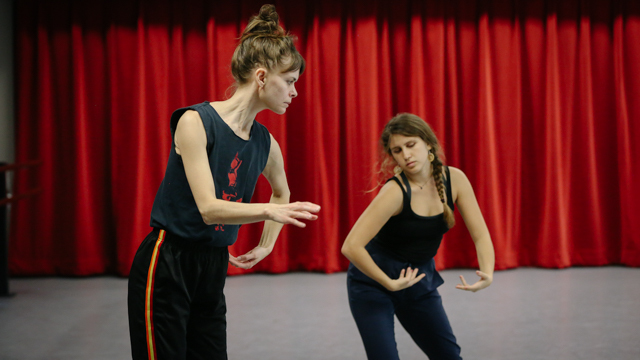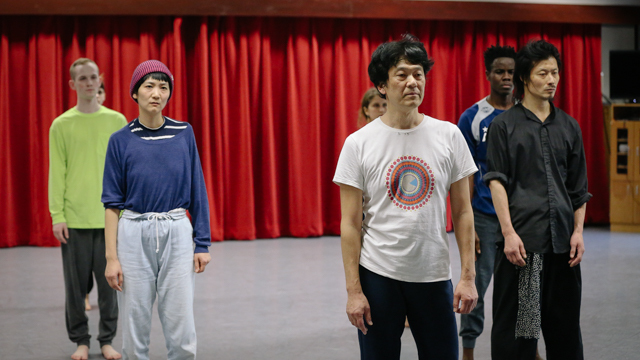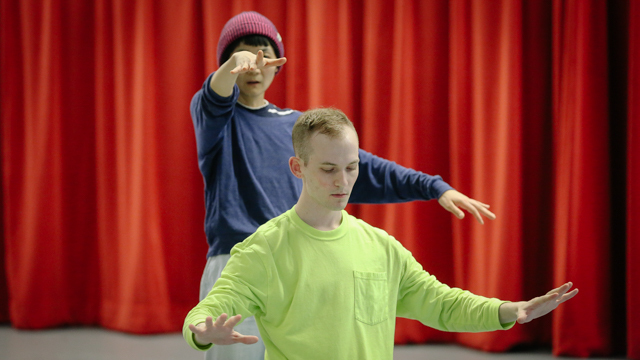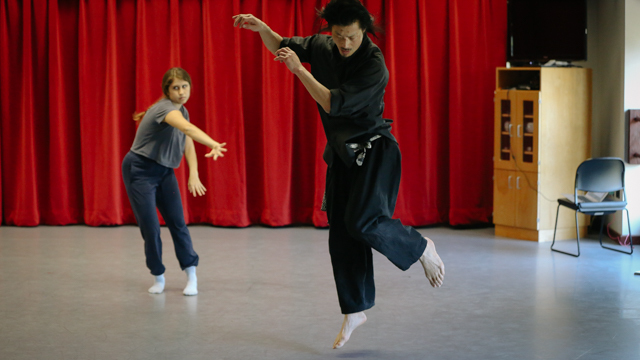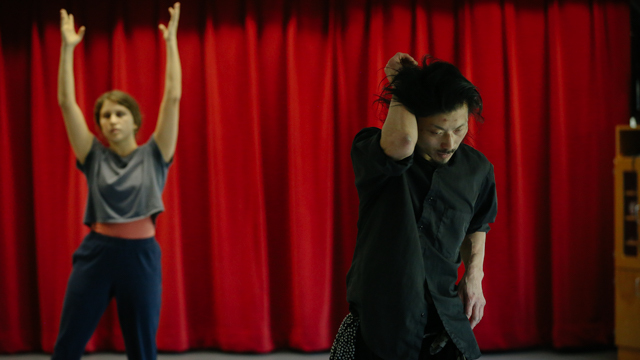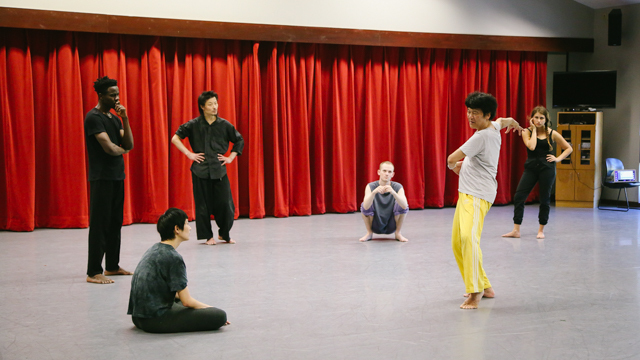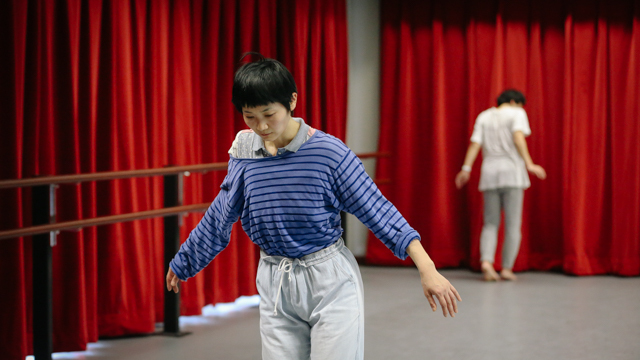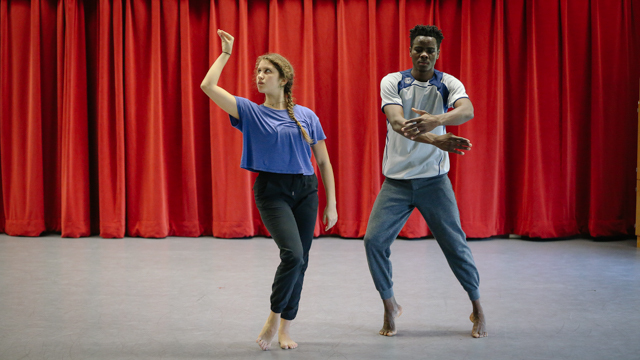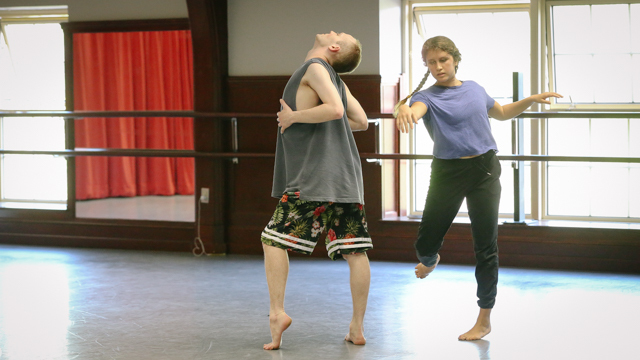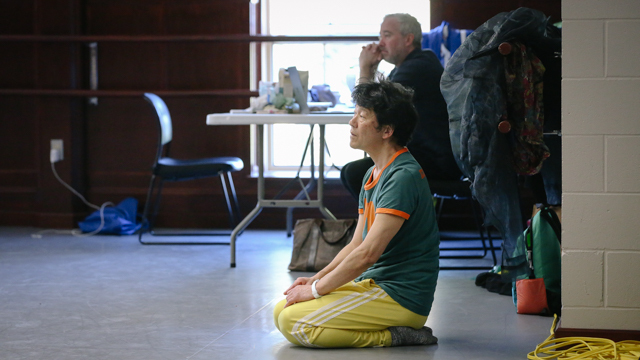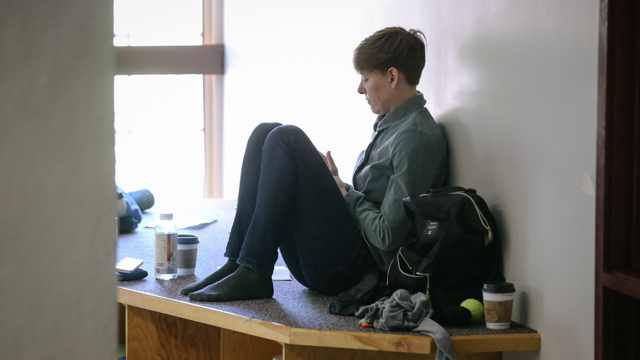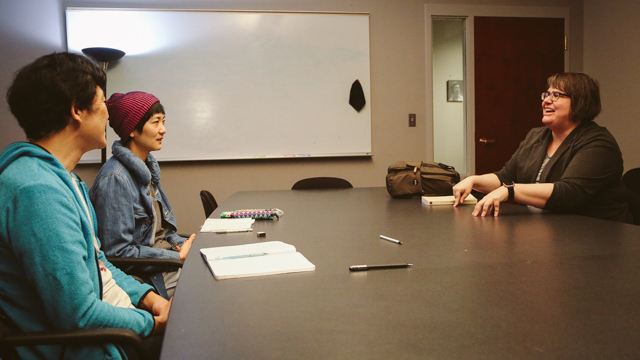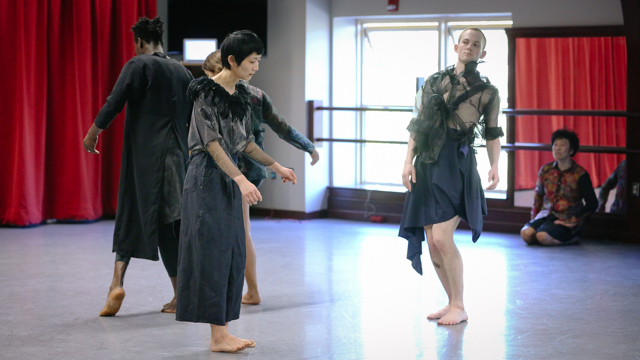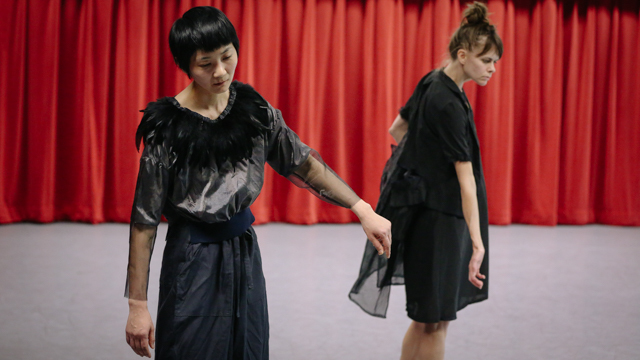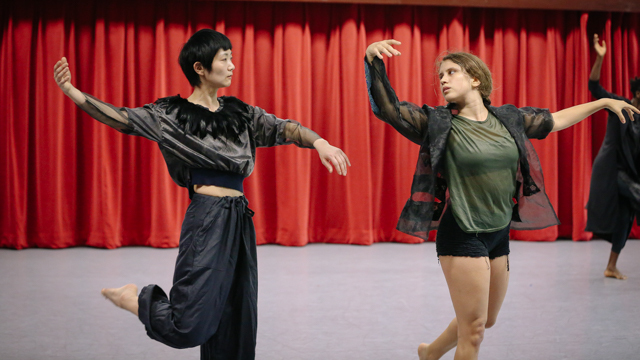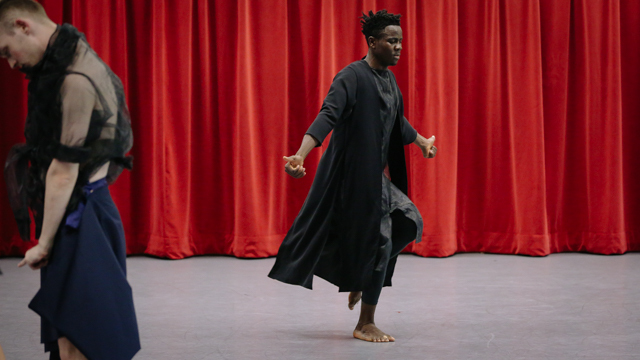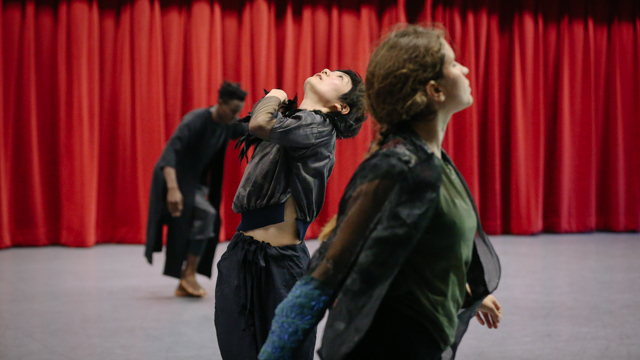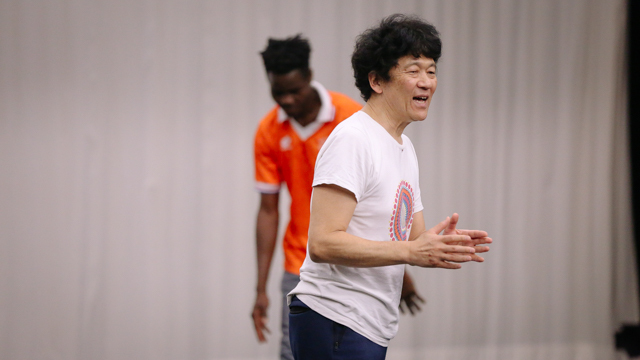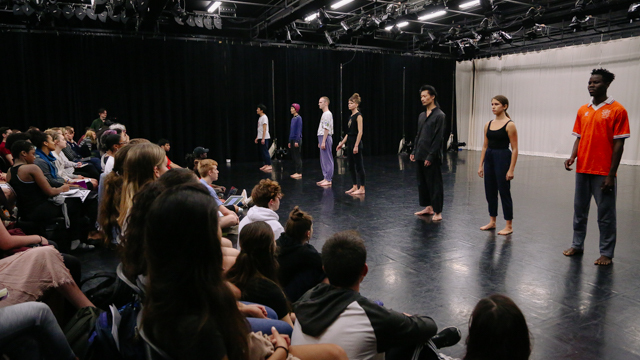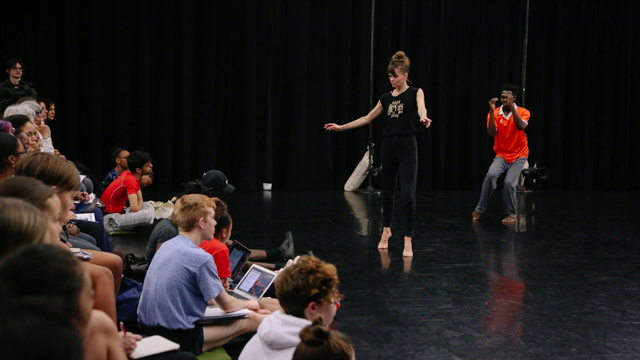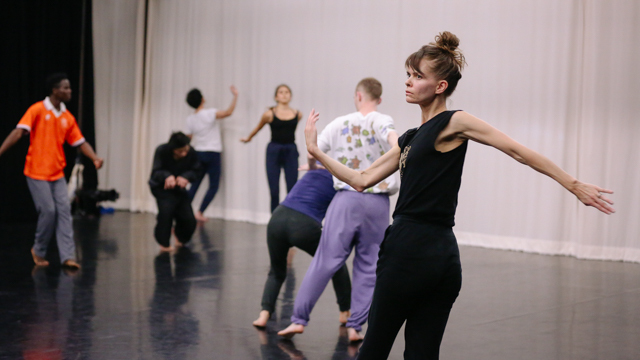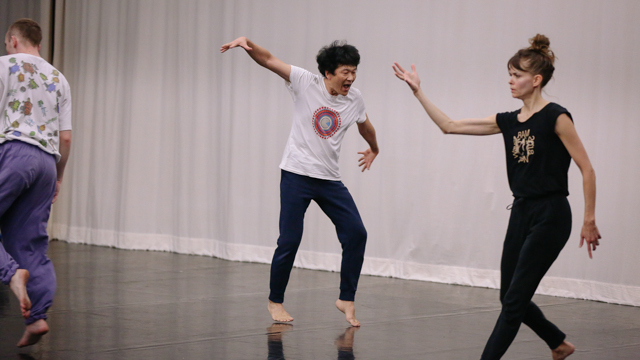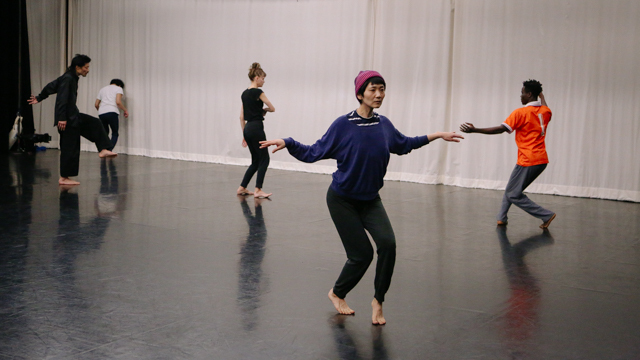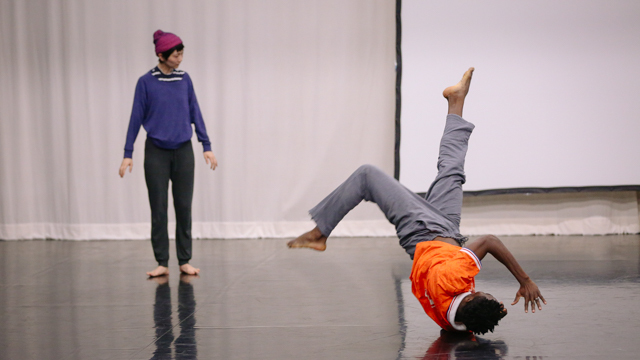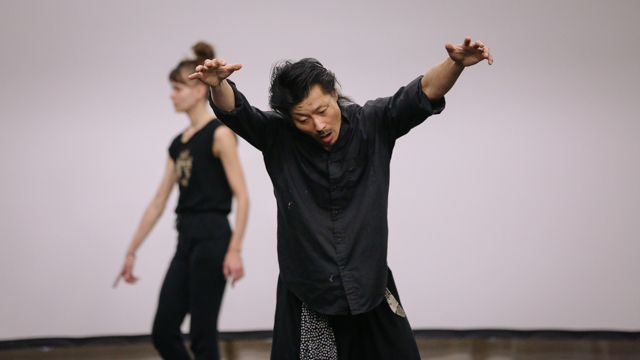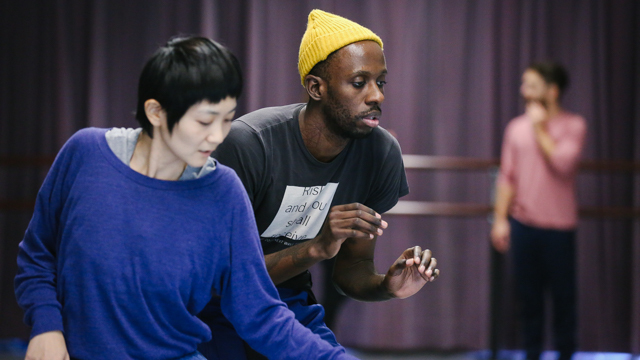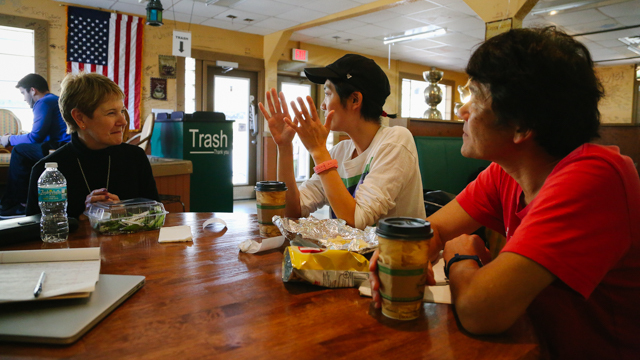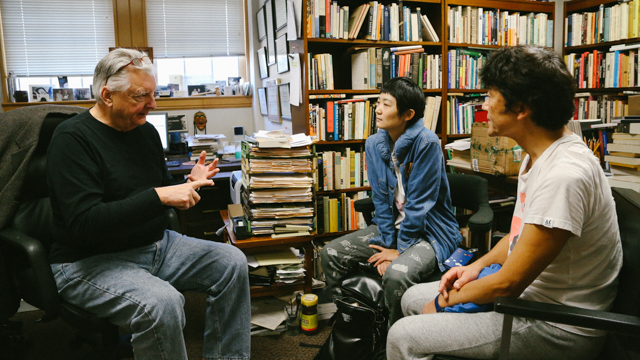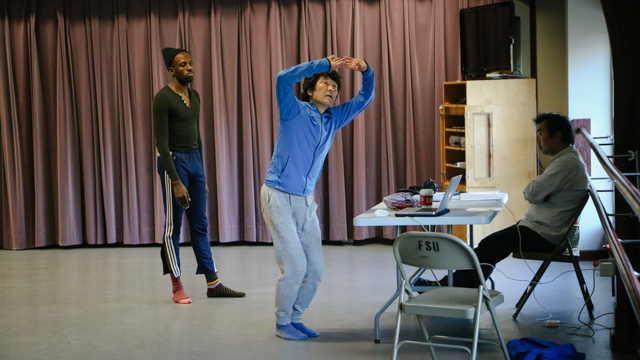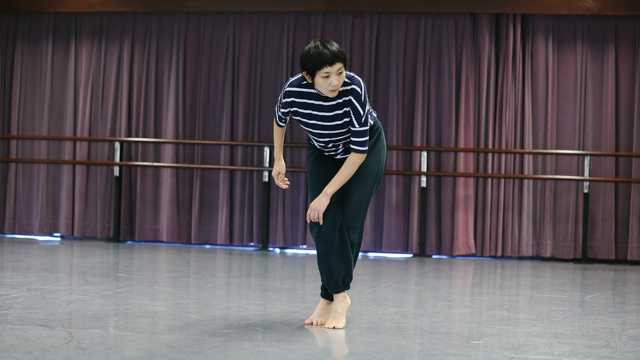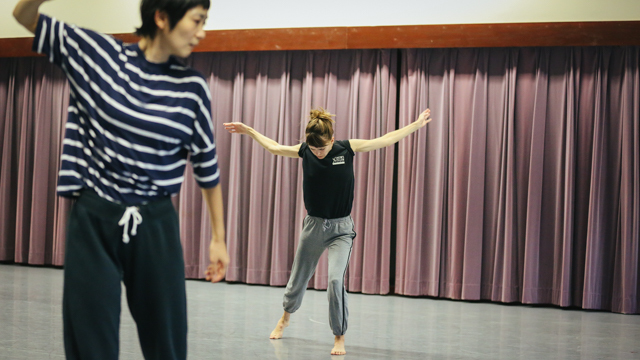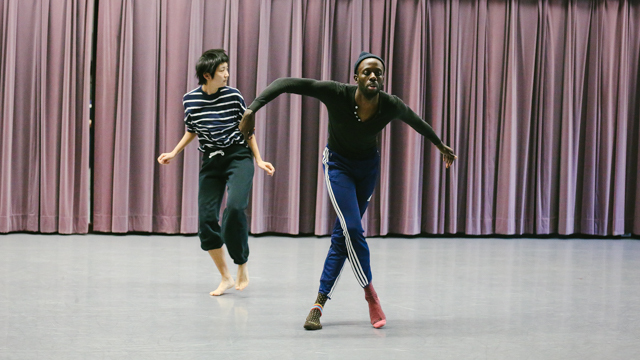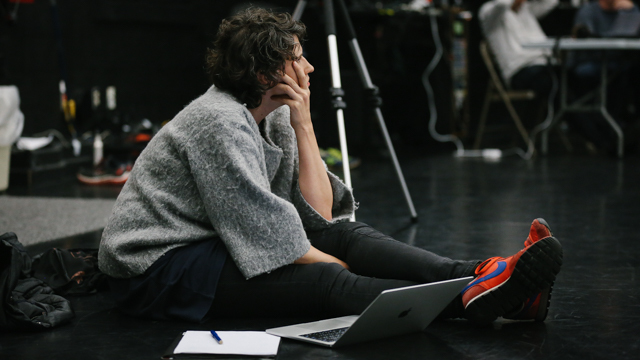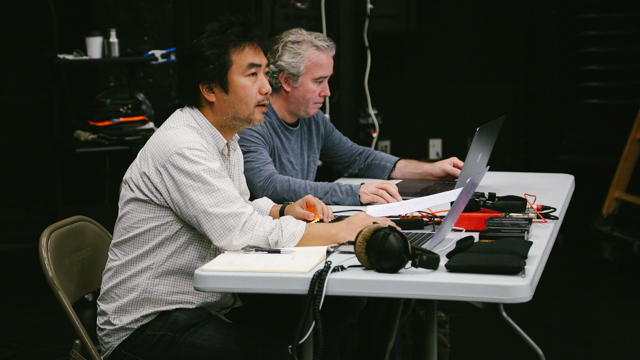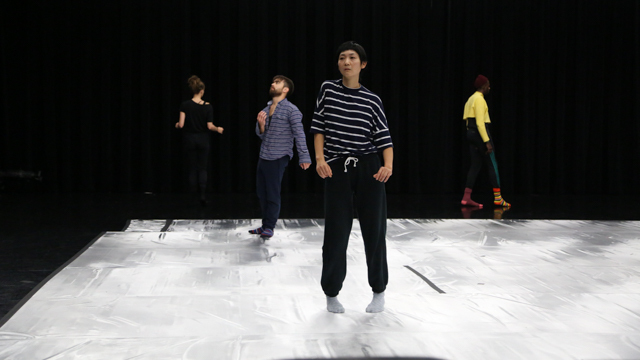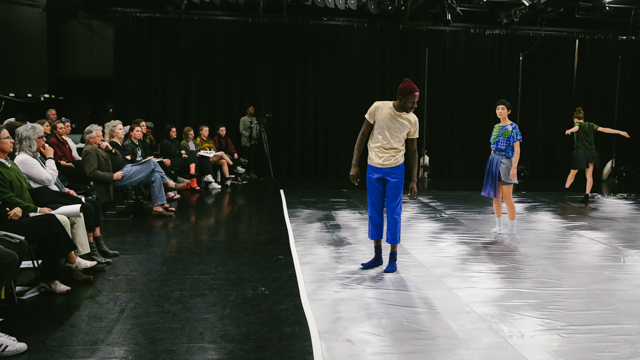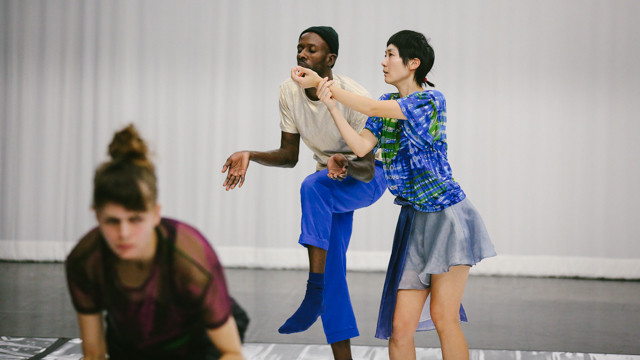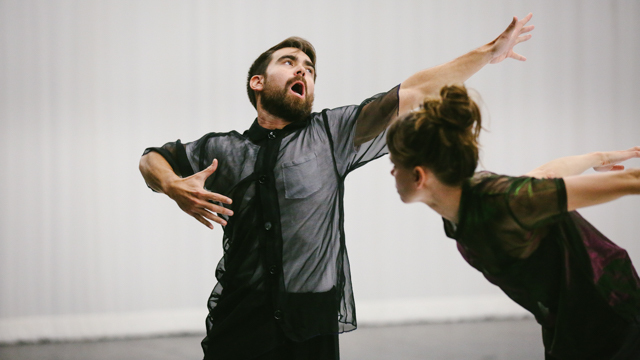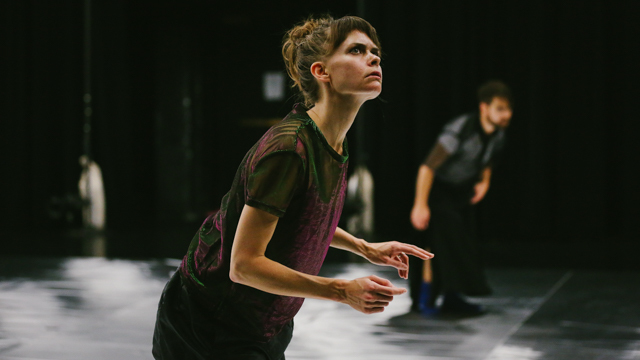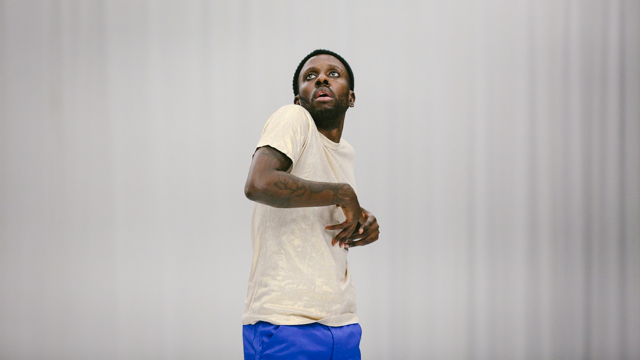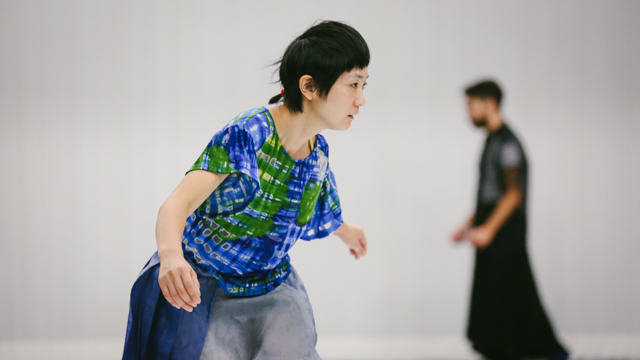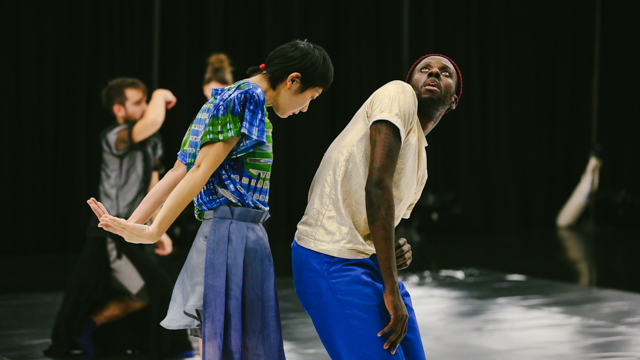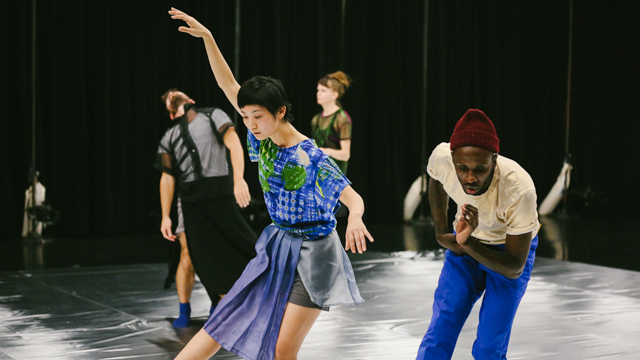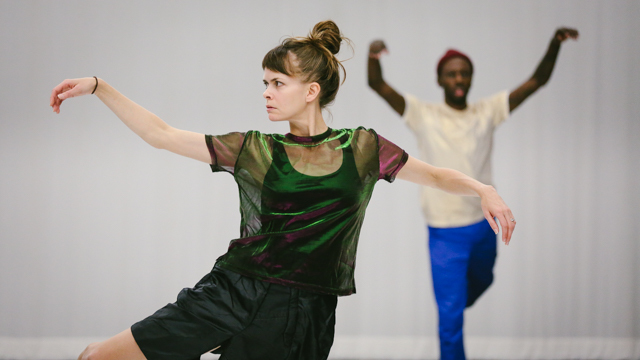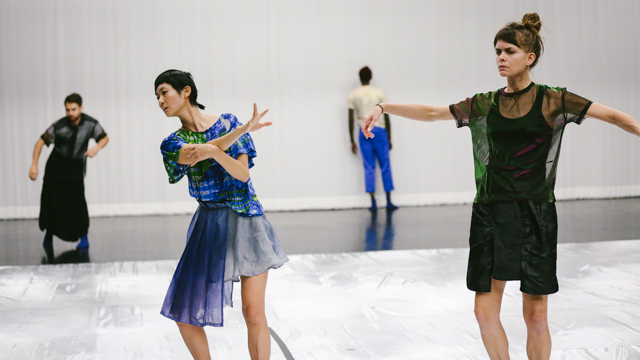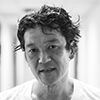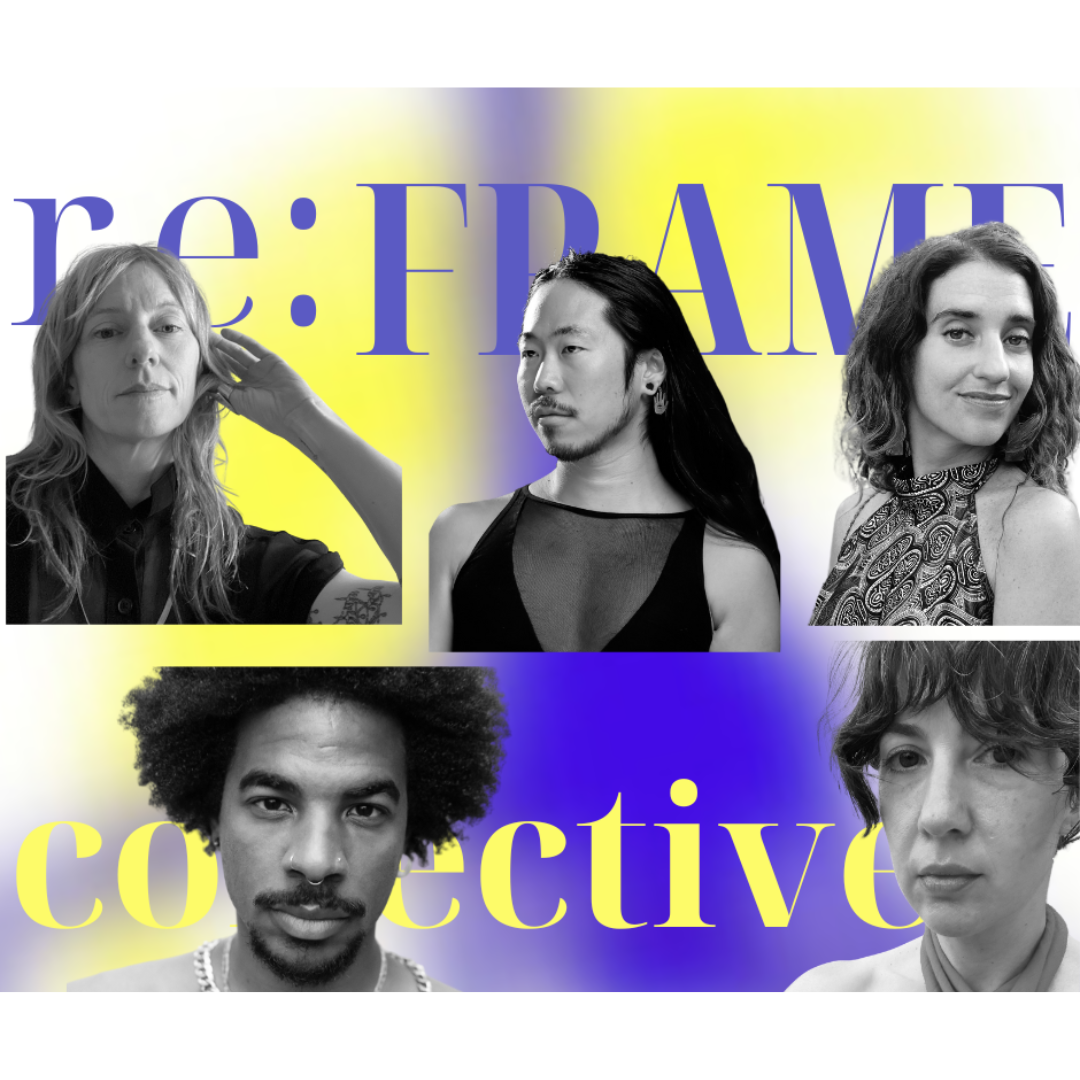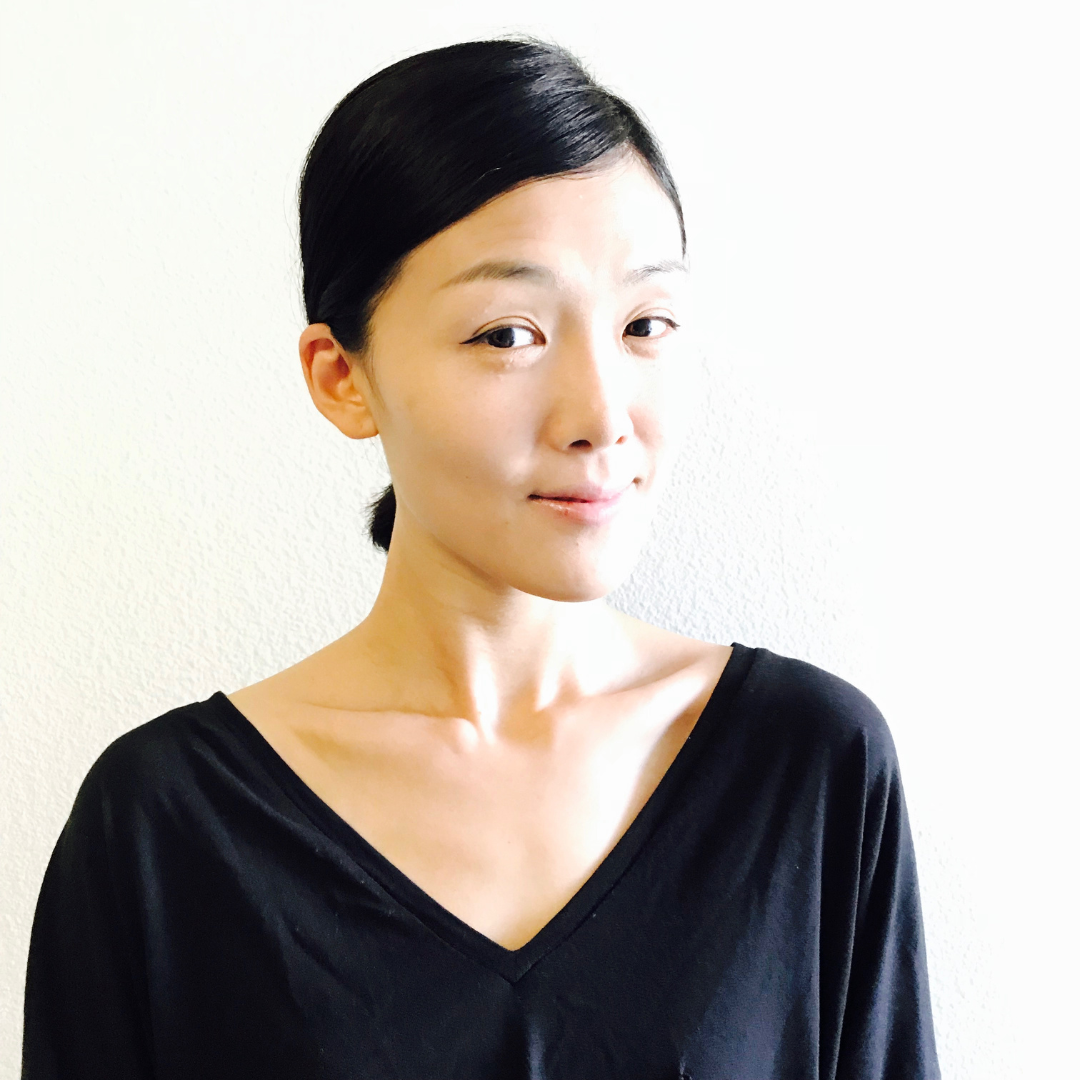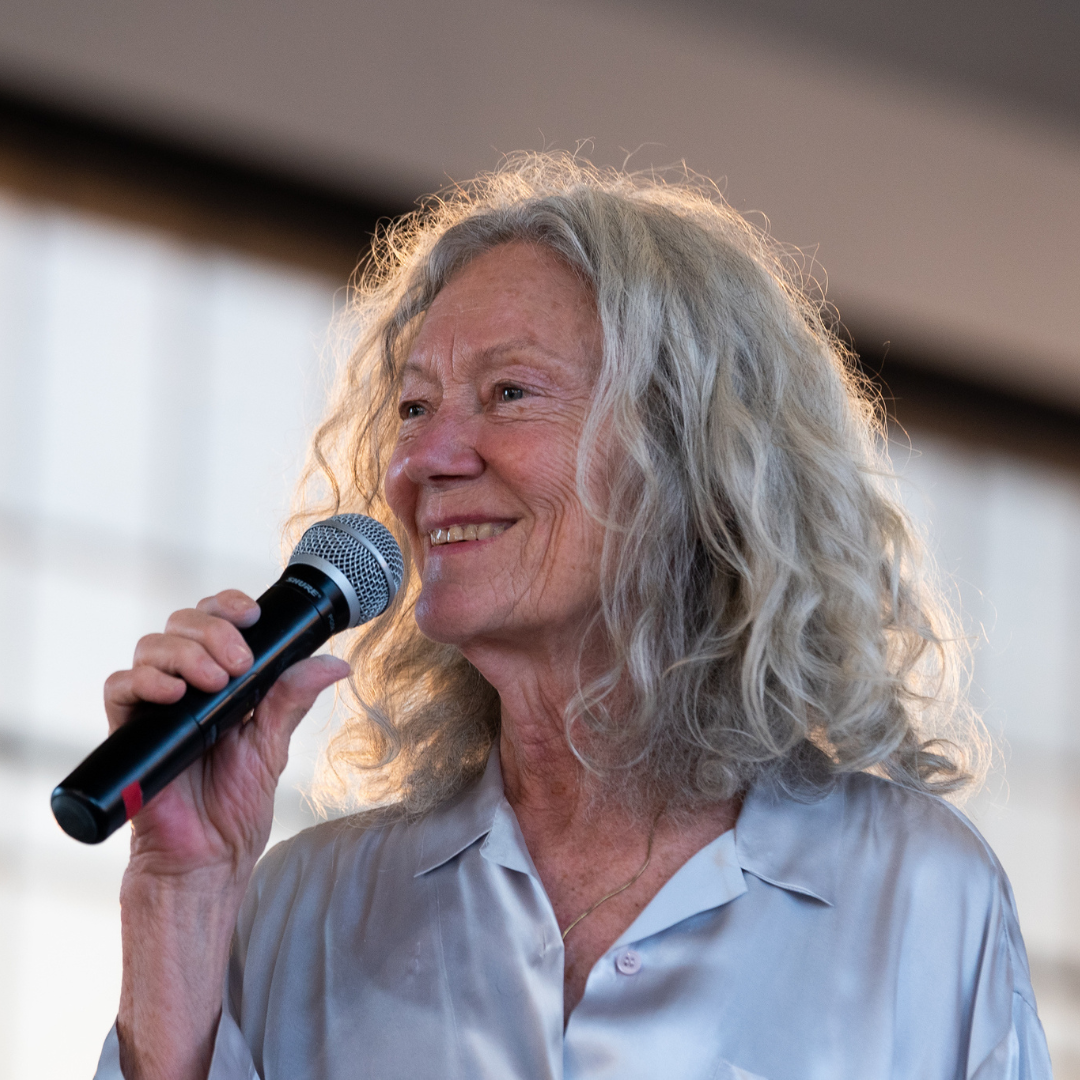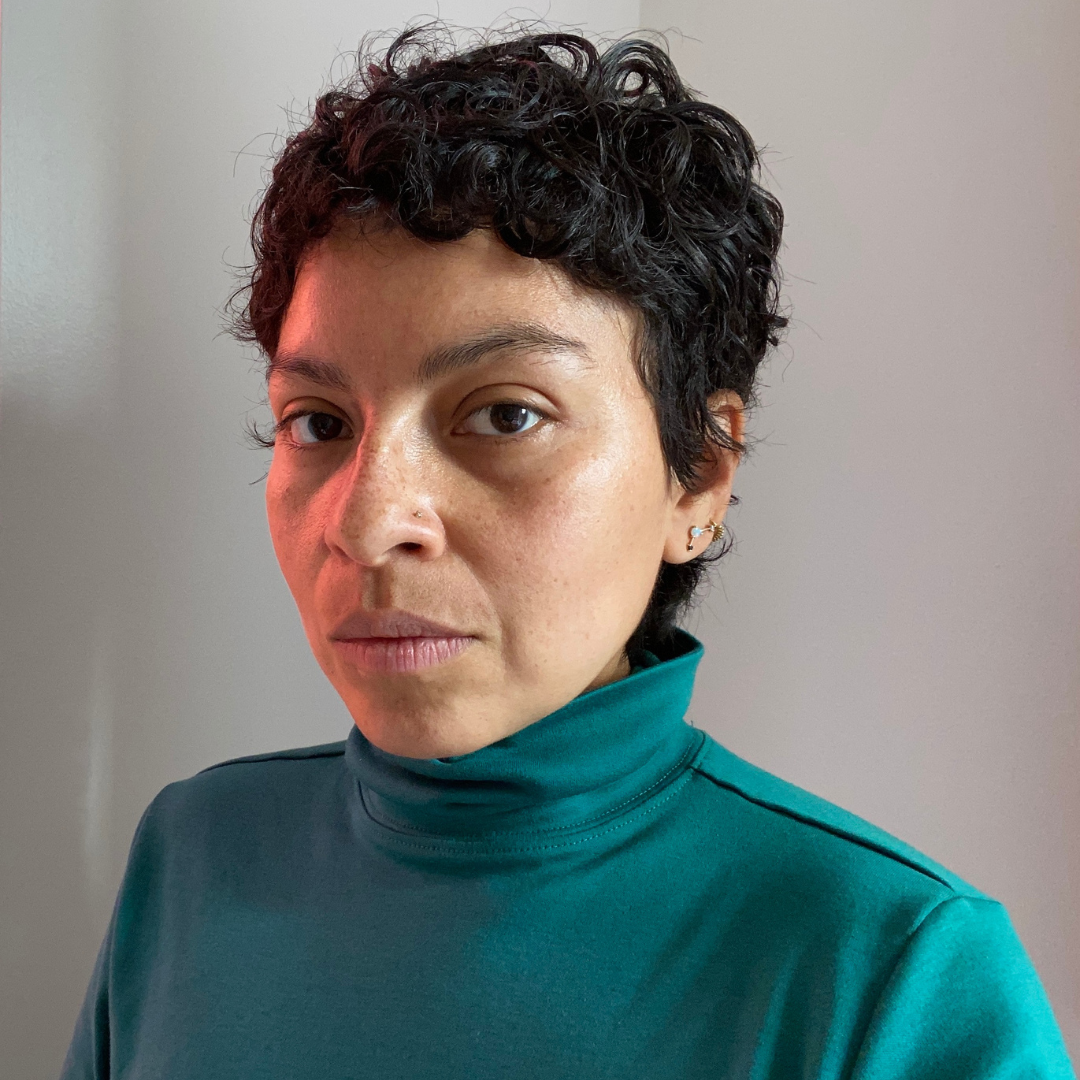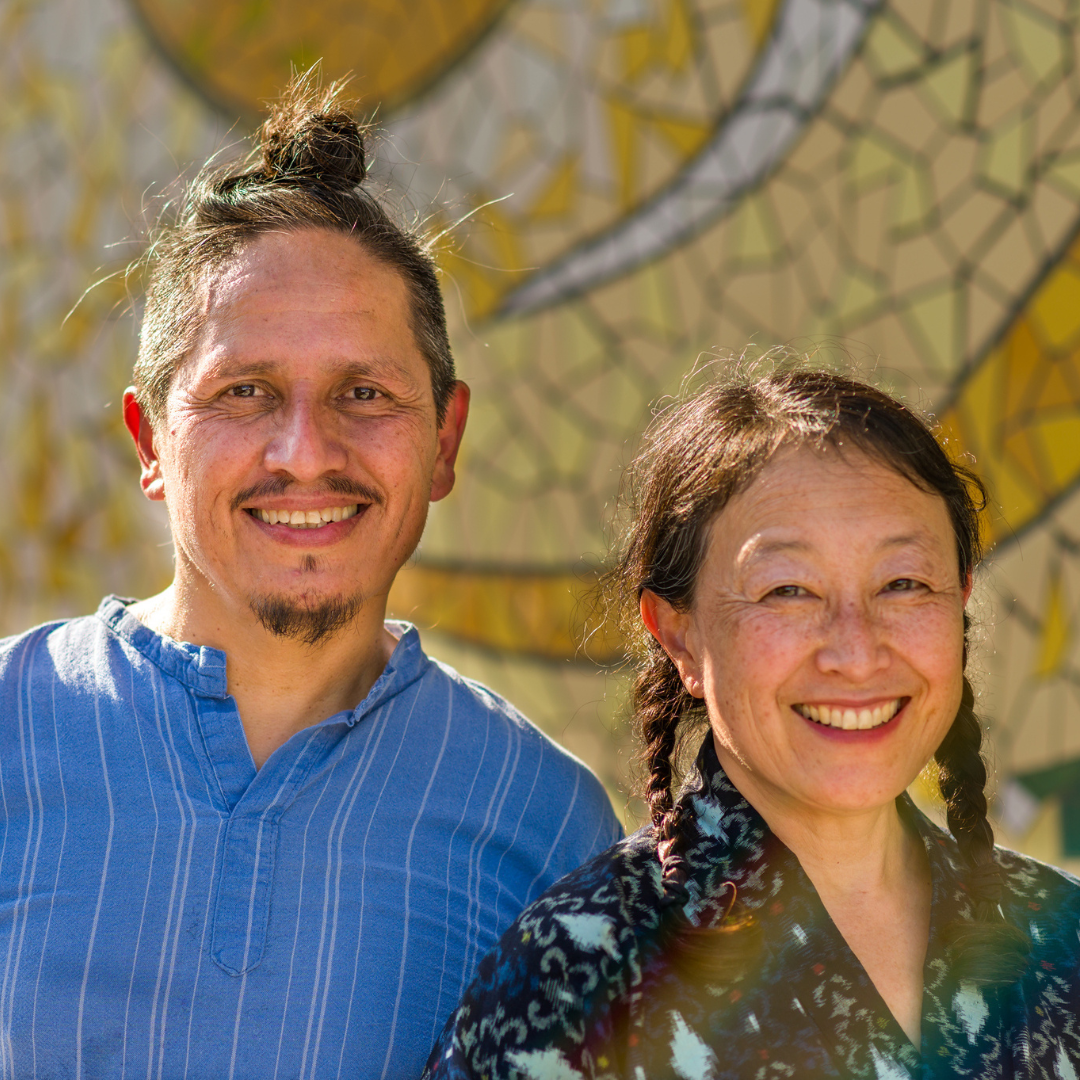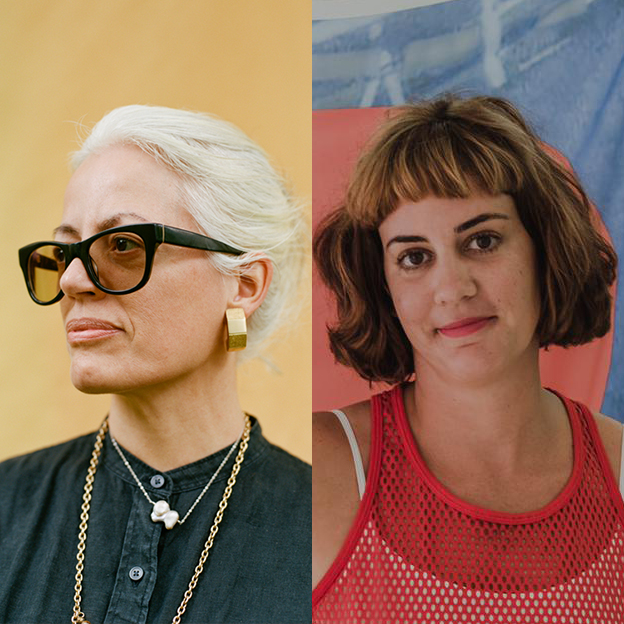Returning Choreographic Fellow | March 14-30, 2019
Darkness Odyssey Part 3: Non-Opera, Becoming
Japanese artist Kota Yamazaki, who divides his time between Tokyo, Japan, and New York City, returned to MANCC for his second of three residencies to develop the final piece in his Darkness Odyssey trilogy. The work combines Eastern and Western philosophies from modernist French thinkers, Deleuze and Guattari, to butoh pioneer, Tatsumi Hijikata. Combining these seemingly disparate lineages, Yamazaki imagines the body as a black hole, with the ability to absorb everything it encounters.
Yamazaki first came to MANCC in November 2017 to develop Part 2: I or Hallucination from the same trilogy. Part 2 laid the groundwork for Part 3 by considering the porousness of bodies (fragile and vaporous) and the ability to reflect our ever-changing inner landscapes while exploring our interconnected universe. During the previous residency, Yamazaki had the opportunity to meet with Robert O. Lawton Professor of English, Dr. Stanley Gontarski, and Certified Vision Rehabilitation Therapist, Professor Lynda Jones. Part 2 went on to premiere to critical acclaim at Baryshnikov Art Center in New York City the following month, and was nominated for the 2018 New York Dance and Performance “Bessie” Award for Outstanding Production. Tom Phillips of the Danceview Times called the work “a riveting hour-plus of pure theater.” Dance Magazine’s Wendy Perron listed Darkness Odyssey: Part 2, I or Hallucination among her Top Picks for Best Choreography of 2017, saying that it “…put a spell on the audience.”
Part 3, Non-Opera, Becoming features a team of international dancers with diverse backgrounds including Japanese dancer, Taketeru Kudo, one of the few remaining butoh performers to have trained directly with Hijikata, and African dancer Alain Sinandja Tongo from Togo. Among Kota’s other collaborators are New York-based performers Jennifer Gonzalez, Joanna Kotze, Mina Nishimura, and Connor Voss, whose experiences and practices span a wide range.
Inspired by these performers, who organically carry the forms of dance they perform, Yamazaki aims to blur the distinction between these dance forms by boiling them down to their most fundamental essence. Yamazaki hopes to address how each dancer deals with self-identity as a performer. He asks, “how can a performer shift his/her identity by internalizing something foreign,” as he also looks at his recent interest in defining co-existence.
As a part of MANCC’s Embedded Writers Initiative, artist, curator, and archivist Cori Olinghouse joined Yamazaki and his collaborators for two days. This time offered an opportunity for Olinghouse to deepen her relationship as a writer to Yamazaki’s work; Olinghouse previously wrote on the first part of the trilogy, Part 2: I or Hallucination while Yamazaki was in residency at at the Baryshnikov Art Center in 2017. Funded by The Andrew W. Mellon Foundation, this initiative is designed to support the re-imagining of dance writing conventions in order to better respond to and engage with a wider range of ever-evolving contemporary forms.
Additionally, during his time at MANCC, Yamazaki had the opportunity to meet with Dr. Kristina Buhrman, Assistant Professor of Religion at FSU, whose research focuses on Japanese religions, specifically during the pre-modern period (before 1600). Further, Yamazaki and his collaborators hosted a work-in-progress showing during Assistant Professor Gwen Welliver’s Senior Capstone class in the School of Dance. Additional attendees included Professor Douglas Corbin’s Rhythmic Analysis course and Dr. Jen Atkins’s Dance Practices of the Global Gulf research seminar.
This residency, including the Embedded Writers Initiative, was supported by The Andrew W. Mellon Foundation.
Collaboarators in Residence: Mina Nishimura, Joanna Kotze, Jennifer Gonzalez, Taketeru Kudo, Shinandja Dakonyeme, Connor Voss [Performers], Thomas Dunn [Lighting Designer], Cori Olinghouse [Writer]
